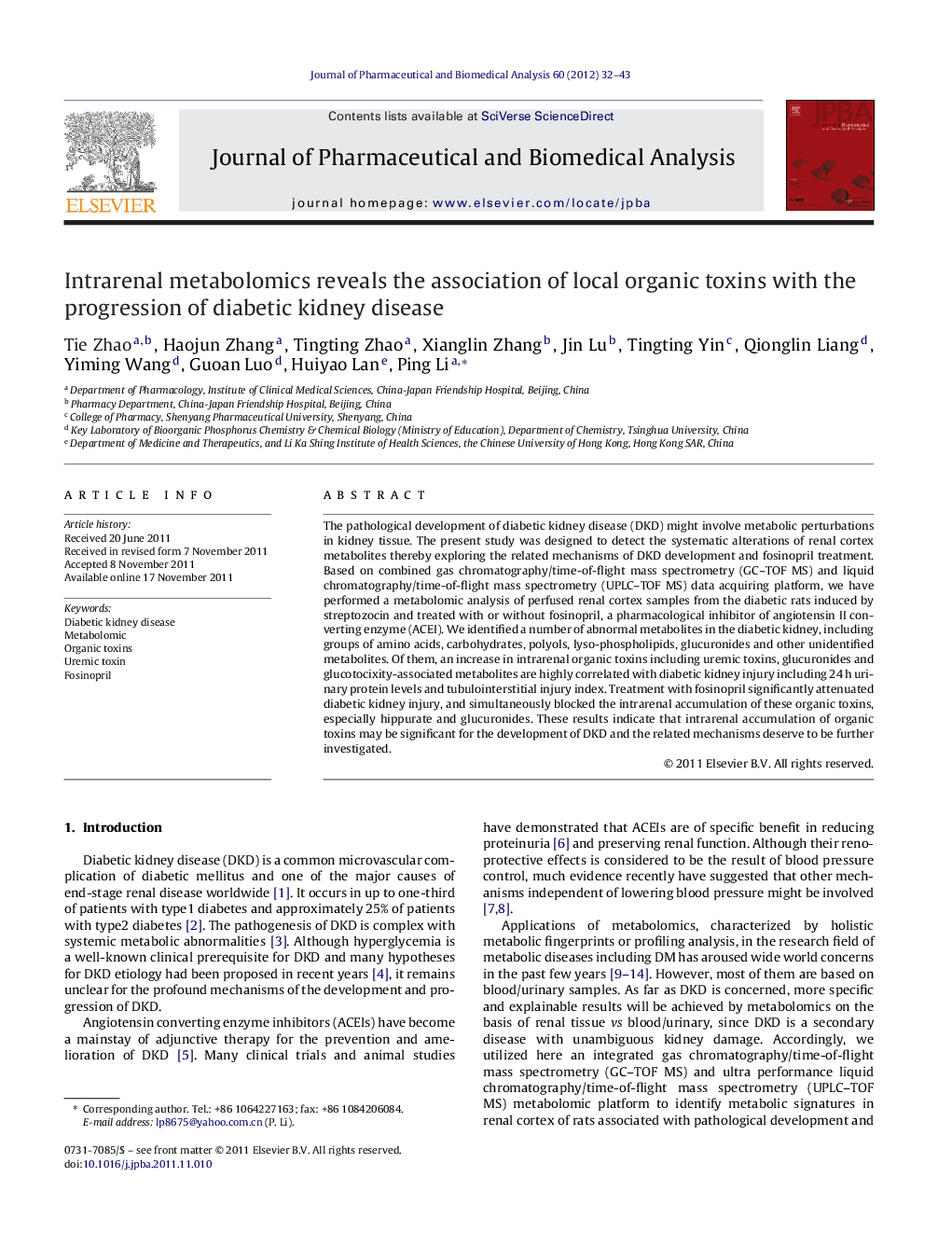| Article ID | Journal | Published Year | Pages | File Type |
|---|---|---|---|---|
| 1221943 | Journal of Pharmaceutical and Biomedical Analysis | 2012 | 12 Pages |
The pathological development of diabetic kidney disease (DKD) might involve metabolic perturbations in kidney tissue. The present study was designed to detect the systematic alterations of renal cortex metabolites thereby exploring the related mechanisms of DKD development and fosinopril treatment. Based on combined gas chromatography/time-of-flight mass spectrometry (GC–TOF MS) and liquid chromatography/time-of-flight mass spectrometry (UPLC–TOF MS) data acquiring platform, we have performed a metabolomic analysis of perfused renal cortex samples from the diabetic rats induced by streptozocin and treated with or without fosinopril, a pharmacological inhibitor of angiotensin II converting enzyme (ACEI). We identified a number of abnormal metabolites in the diabetic kidney, including groups of amino acids, carbohydrates, polyols, lyso-phospholipids, glucuronides and other unidentified metabolites. Of them, an increase in intrarenal organic toxins including uremic toxins, glucuronides and glucotocixity-associated metabolites are highly correlated with diabetic kidney injury including 24 h urinary protein levels and tubulointerstitial injury index. Treatment with fosinopril significantly attenuated diabetic kidney injury, and simultaneously blocked the intrarenal accumulation of these organic toxins, especially hippurate and glucuronides. These results indicate that intrarenal accumulation of organic toxins may be significant for the development of DKD and the related mechanisms deserve to be further investigated.
► Intrarenal abnormal metabolites are identified in rats with diabetic kidney disease. ► Intrarenal uremic toxins and glucuronides are correlated with diabetic kidney injury. ► Fosinopril treatment blocks the accumulation of some toxins in diabetic kidney.
